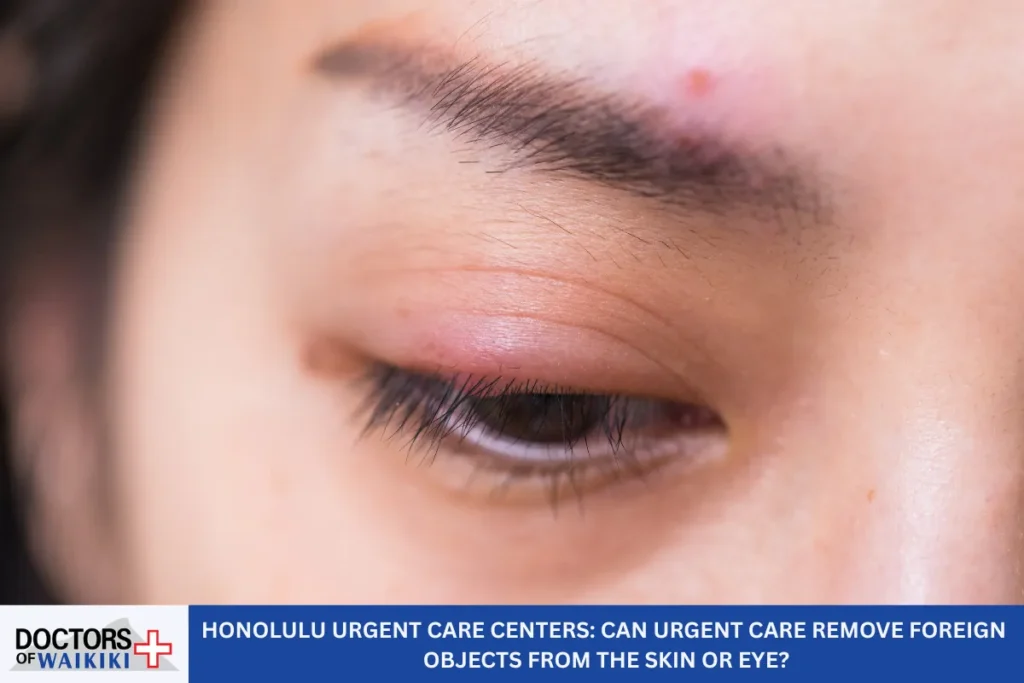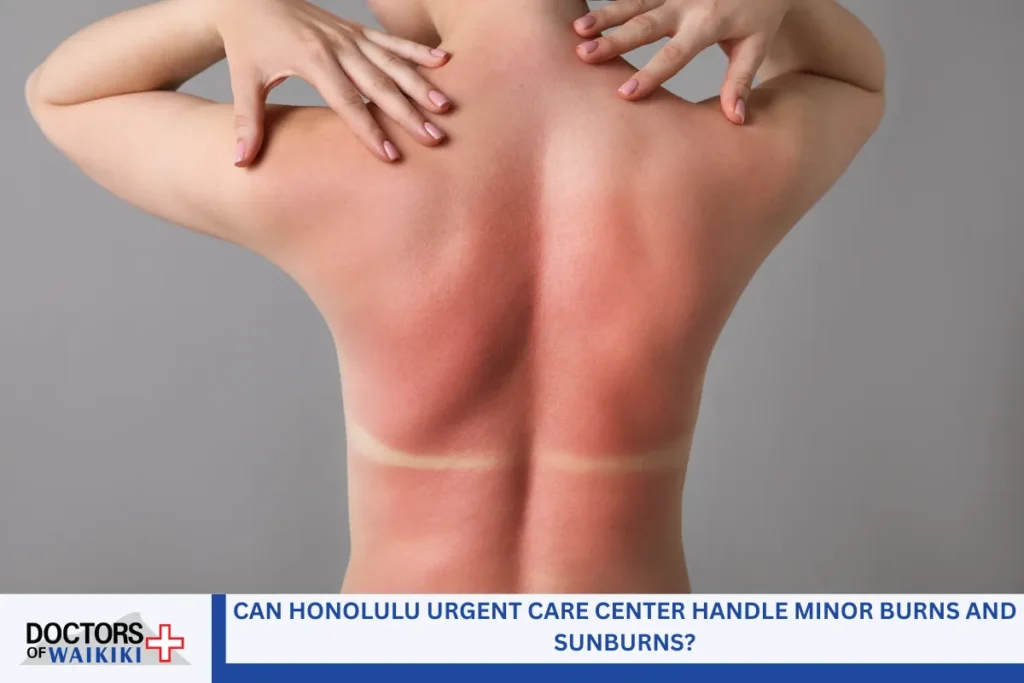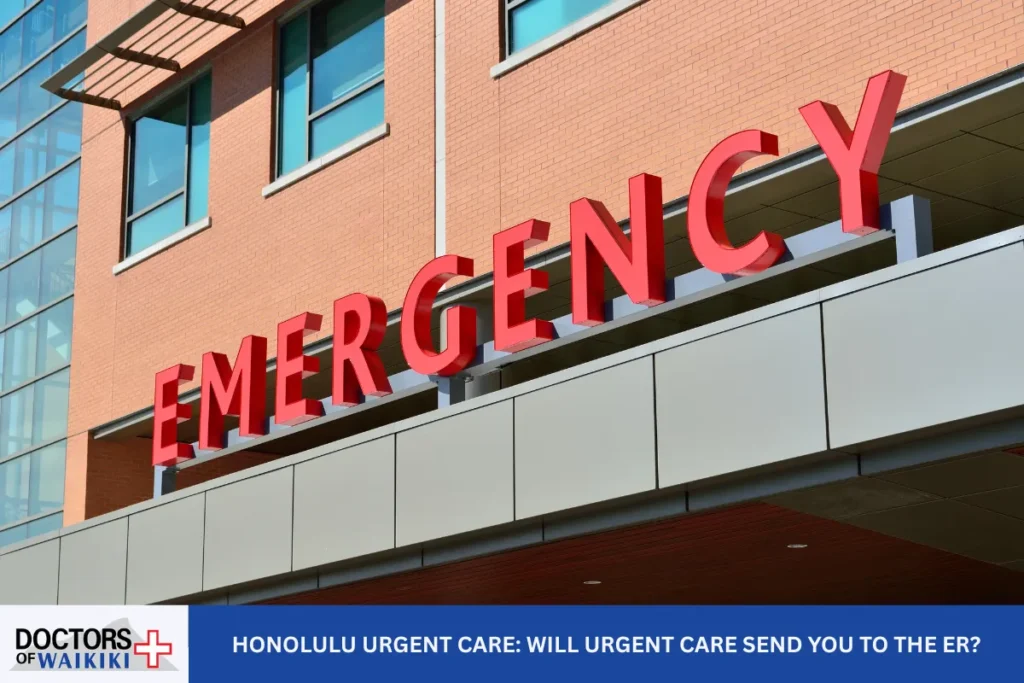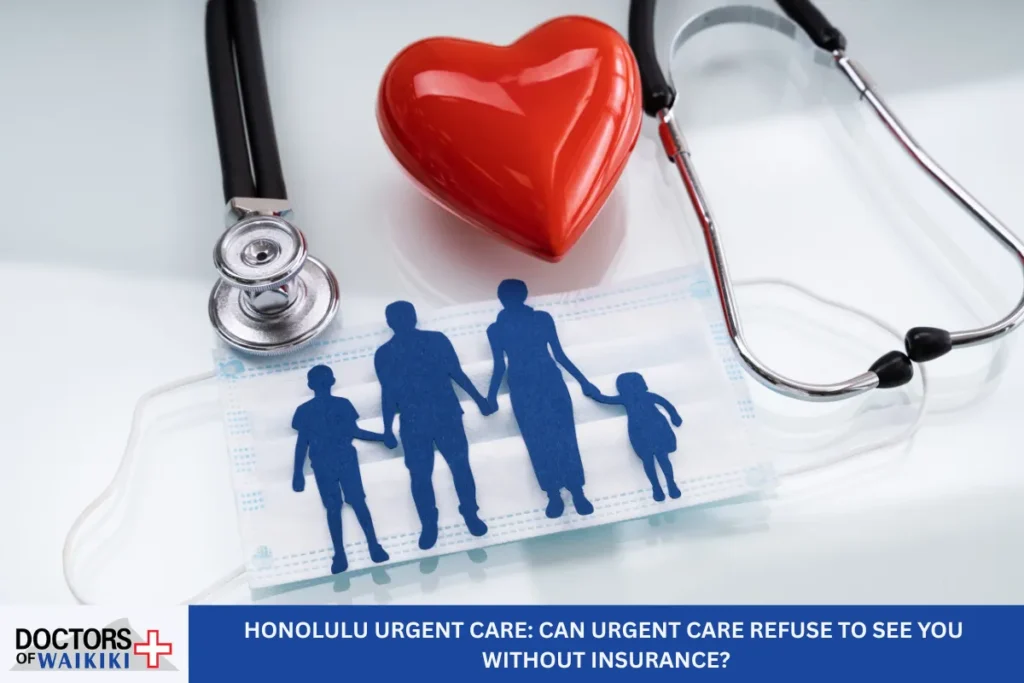Honolulu Urgent Care Centers: Can Urgent Care Remove Foreign Objects From the Skin or Eye?
If you’re hanging out in Honolulu and suddenly get something stuck in your skin or eye, you might wonder where to go for help and how fast you can get seen. Honolulu urgent care centers are lifesavers for these painful surprises.
Imagine a piece of metal in your eye from yardwork, or your child gets a splinter in their finger—these moments are scary and uncomfortable. Waiting hours in the hospital emergency room can make you feel even worse.
The good news is, urgent care clinics offer walk-in availability and same-day help for foreign body removal, so you can get back to enjoying your day.
Let’s break down everything you need to know about urgent care and foreign object removal from skin and eyes—when it’s safe, how it works, and who takes care of you.
When to Seek Urgent Care for Foreign Body Removal
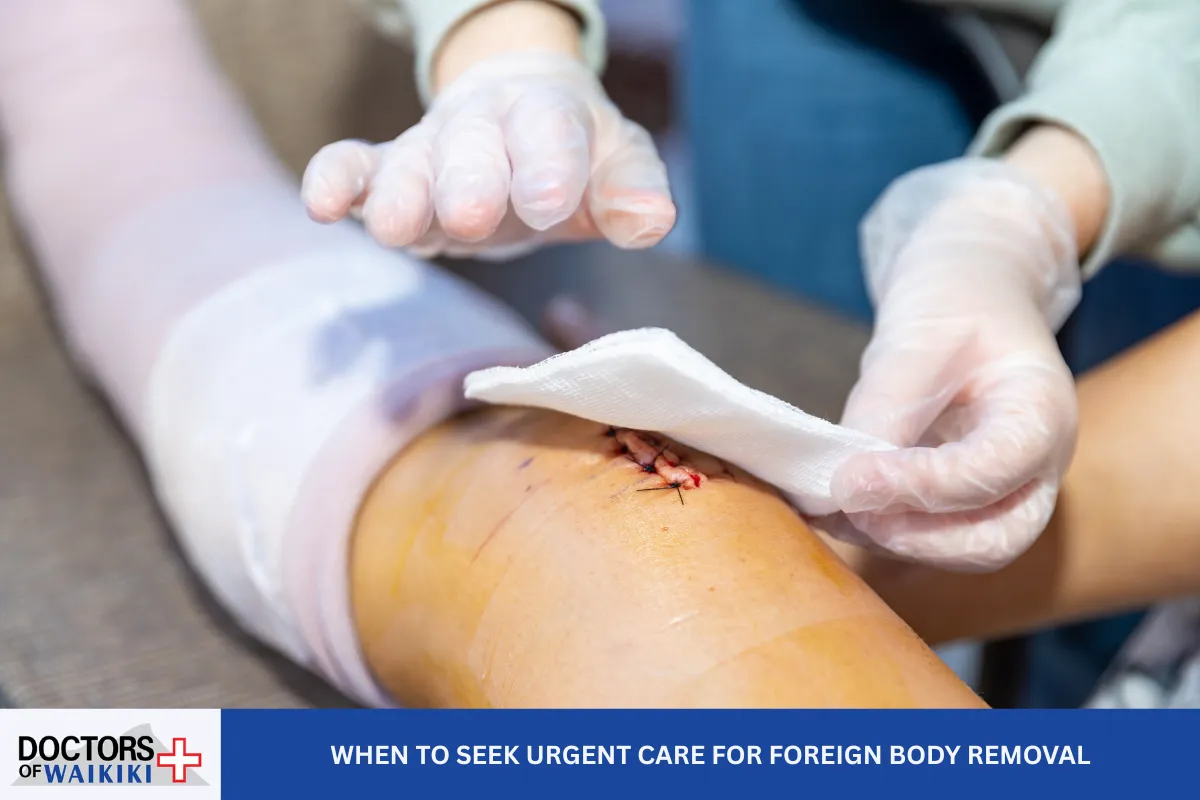
Accidents happen fast—a bit of sawdust flies into your eye, your foot meets a rusty nail, or a child plays with glass and ends up with a splinter. It’s scary, it hurts, and you need help right away. But is urgent care the right place?
Urgent care centers are designed for conditions that need quick treatment but aren’t life-threatening. When a foreign object is stuck in your skin or eye, a reasonable person can skip the long waiting line at the emergency room and head straight to a local urgent care clinic. Walk-in clinics in Honolulu offer same-day services for exactly these kinds of situations. If the injury is not causing severe bleeding, loss of consciousness, or major vision loss, urgent care is typically the best bet.
Here’s a list of instances that urgent care can help with:
- Splinters: Wood, glass, plastic, or even thorns in the skin.
- Metal or glass in the eye: Often from high-velocity grinding or drilling.
- Corneal foreign body: Dust, sand, or other tiny objects on the eye surface.
- Fishhooks: Embedded in skin, especially hands or face.
- Minor lacerations: Small cuts from sharp foreign objects.
- Puncture wounds: Like from stepping on a nail.
What Urgent Care Centers Can Remove
Urgent care clinics, including those like Doctors of Waikiki in Honolulu, are well-equipped to remove many types of foreign bodies. These include:
- Foreign bodies in the skin: Splinters, glass, metal shards, wood slivers, thorns, or plastic bits.
- Corneal and conjunctival foreign bodies: Particles on the surface of the eye or underneath the eyelids.
- Debris under the skin or nail: For example, after gardening or an accident.
- Superficially embedded objects: That are visible and reasonably accessible.
Even if you’re unsure, it’s always better to be safe and let a trained urgent care provider evaluate and remove the object. For deeply embedded or large objects, urgent care may refer you for special testing or to an emergency room.
Tools, Techniques, and Safety Measures in Urgent Care
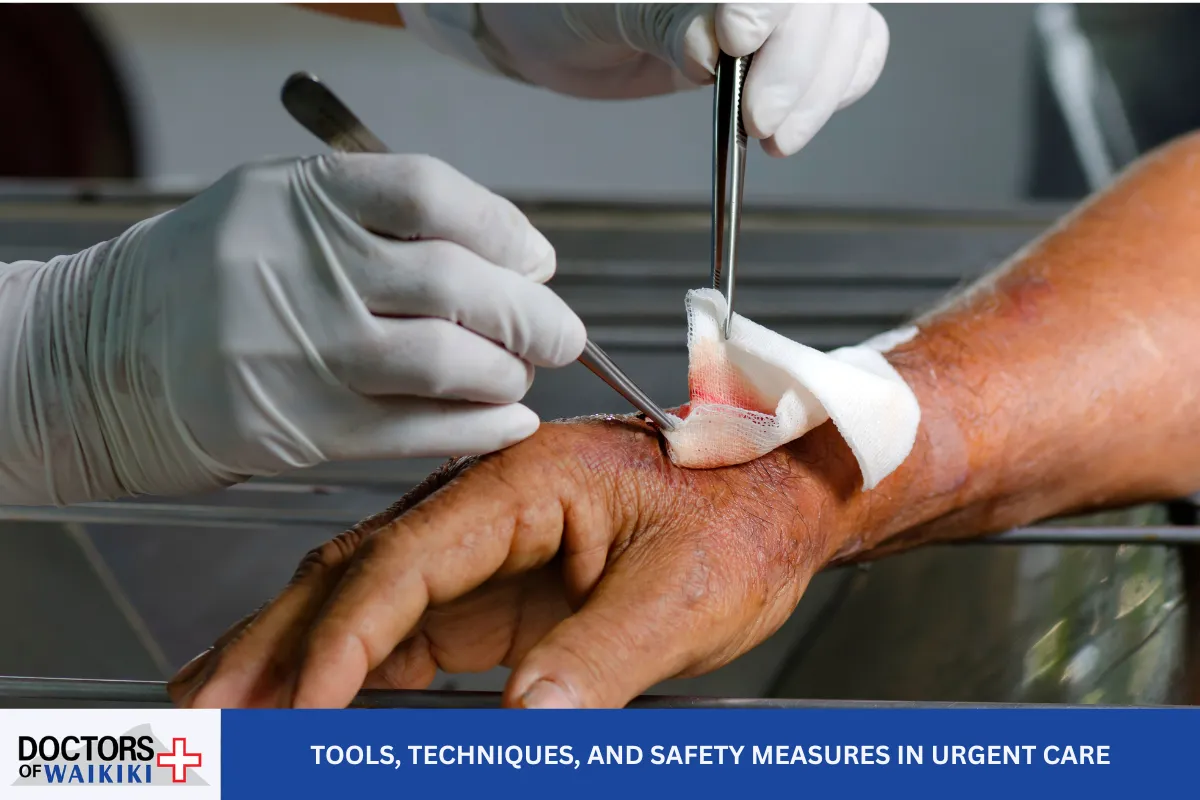
Honolulu urgent care clinics use advanced tools and the skill of board-certified physicians, nurse practitioners, and support staff to remove foreign objects safely. Here’s what happens step by step:
Medical Evaluation and Diagnostics
- Medical history and symptoms: The provider will ask about your symptoms, such as pain, tearing, redness, discharge, vision changes, or swelling.
- Examination: Visual inspection, sometimes including special testing like visual acuity check for the eyes.
- Slit-lamp exam: For the eye, a slit lamp helps the provider see small particles.
- Fluorescein staining: Fluorescein dye and a blue light reveal scratches or foreign bodies on the cornea.
- Eyelid eversion: The lid may be flipped gently to look for hidden debris.
Tools and Equipment
- Forceps/tweezers: For splinter or object extraction.
- Sterile needle: To lift or dislodge deeply embedded objects, used with care.
- Local anesthetic (lidocaine): To prevent pain during removal from the skin.
- Topical eye anesthetic drops (tetracaine, proparacaine): For eye procedures, to numb the area.
- Eye irrigation (flushing): Saline solution washes away dust or chemicals.
- Imaging technology: On-site X-ray, ultrasound, or CT scan for suspected invisible foreign bodies.
Removal and Aftercare
Once numbed and cleaned, the provider will carefully remove the object. If the eye is involved, they may use delicate techniques to avoid scratching the cornea. For skin injuries, thorough wound cleaning and debridement are vital to prevent infection.
After removal, the provider may:
- Treat wounds with antibiotic ointment or prescribe drops (such as erythromycin or a fluoroquinolone for the eye) to prevent infection.
- Offer a tetanus update (Tdap shot), especially for puncture wounds or dirty injuries.
- Provide bandaging, wound or eye protection.
- Give detailed instructions for aftercare, return precautions, and advice for follow-up.
What Symptoms Signal It’s Time to Get Help?
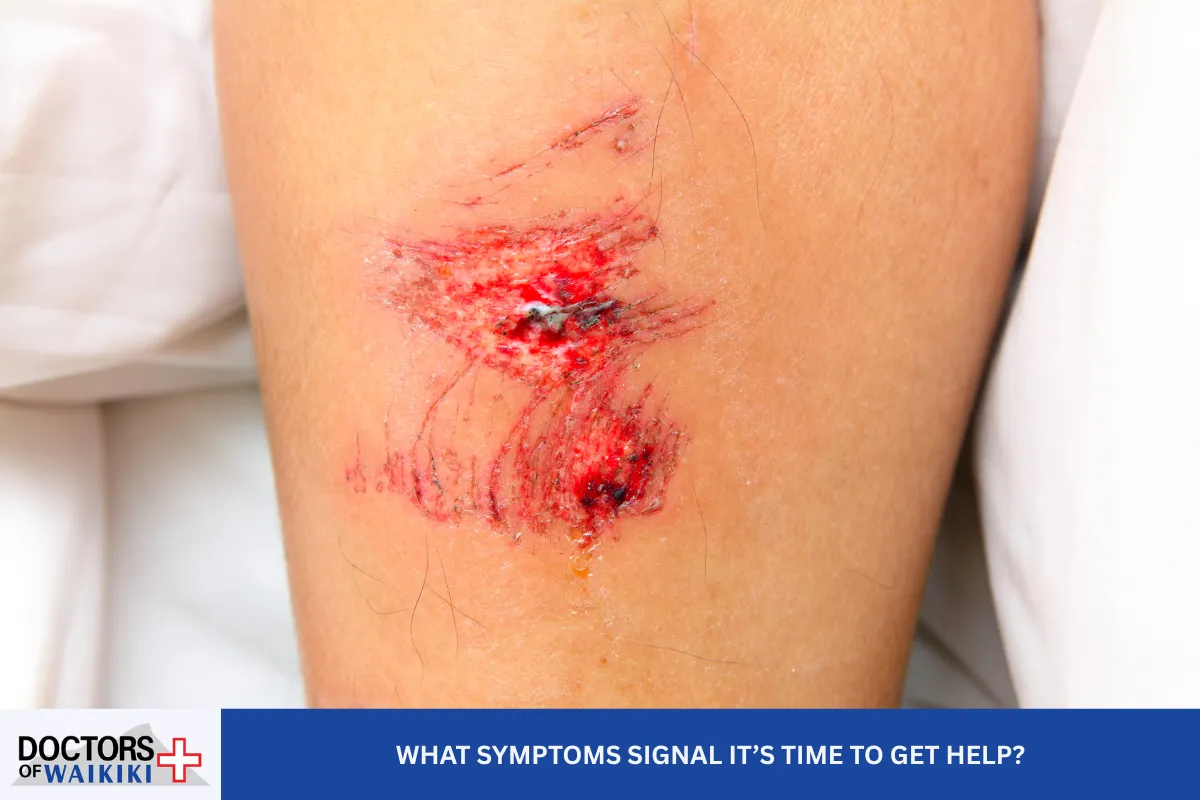
Pain, redness, swelling, tearing, light sensitivity (photophobia), decreased vision, discharge, and a continued foreign body sensation mean it’s time to get checked out. If you think, “something is stuck in my eye” or you notice a rust ring (from prolonged metal contact), see urgent care without delay.
Other warning signs:
- Vision changes that don’t get better after blinking or rinsing the eye.
- Increasing swelling, pus, or spreading redness (possible cellulitis—infection).
- Uncontrollable bleeding (especially from the skin).
Foreign Object Removal from the Eye: What to Expect
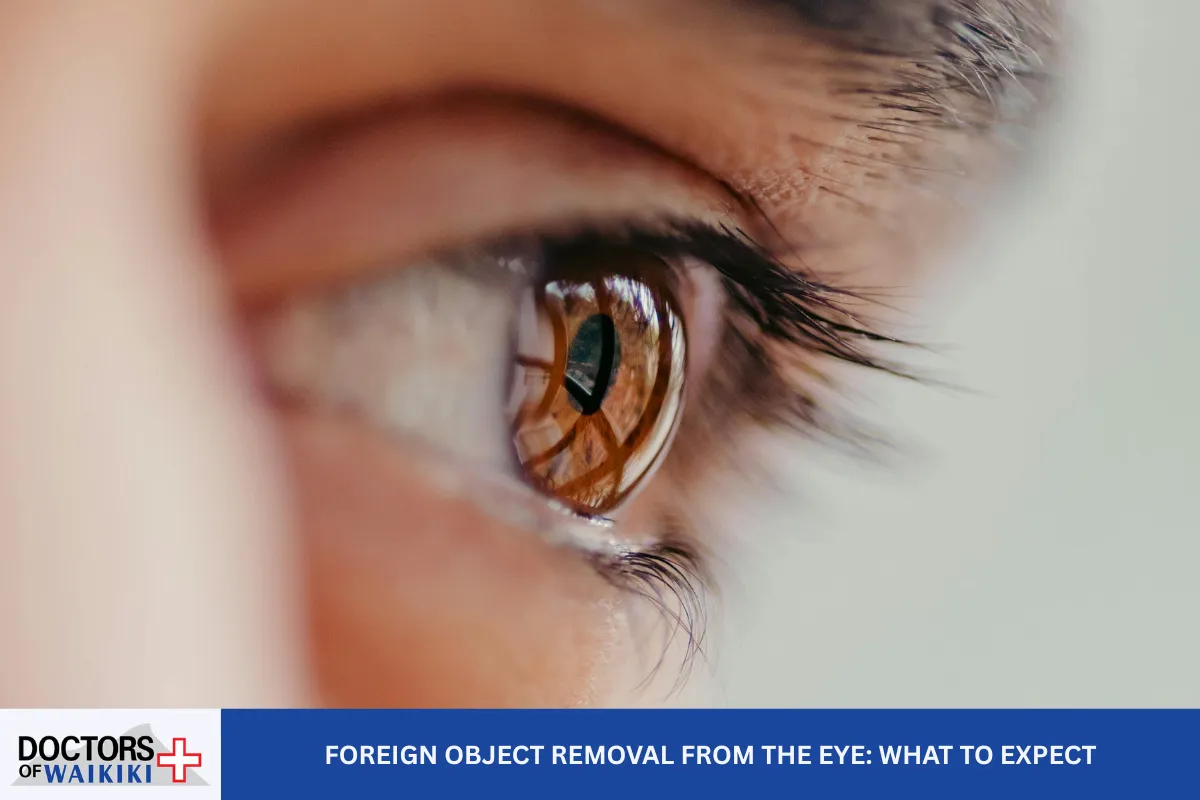
Having something in your eye hurts a lot, and even blinking can be unbearable. Here’s how urgent care centers handle these emergencies:
1. Immediate Assessment
The urgent care medical team will check your vision, ask if you wear contact lenses, and find out what happened. Contact lens-related complications are common and treated right away. Removal of contact lenses may be needed before further care.
2. Diagnostic Testing
A slit lamp, fluorescein dye, and eyelid eversion allow a clear view of any corneal foreign body or corneal abrasion (scratch). The provider documents these findings in the electronic medical records.
3. Flushing and Removal
Eye flushing (irrigation) with saline is gentle but effective. For larger or stubborn objects, the provider may use a moistened cotton swab, ophthalmic tools, or a sterile needle—often after numbing the eye with an anesthetic drop. Removal is followed by more flushing to clear debris.
4. Infection Prevention
Antibiotic eye drops or ointment (sometimes both) are prescribed to protect against corneal ulcer or infection. For example, erythromycin ointment is common.
5. Referral if Needed
Complicated cases (like embedded metal or glass, a large rust ring, or vision-threatening damage) are referred to ophthalmology or optometry for emergency eye exam. The urgent care center can arrange imaging for foreign bodies using X-ray, ultrasound, or CT scan, and coordinate with local specialists if eye surgery or advanced care is needed.
Splinter, Fishhook, and Embedded Object Removal from the Skin
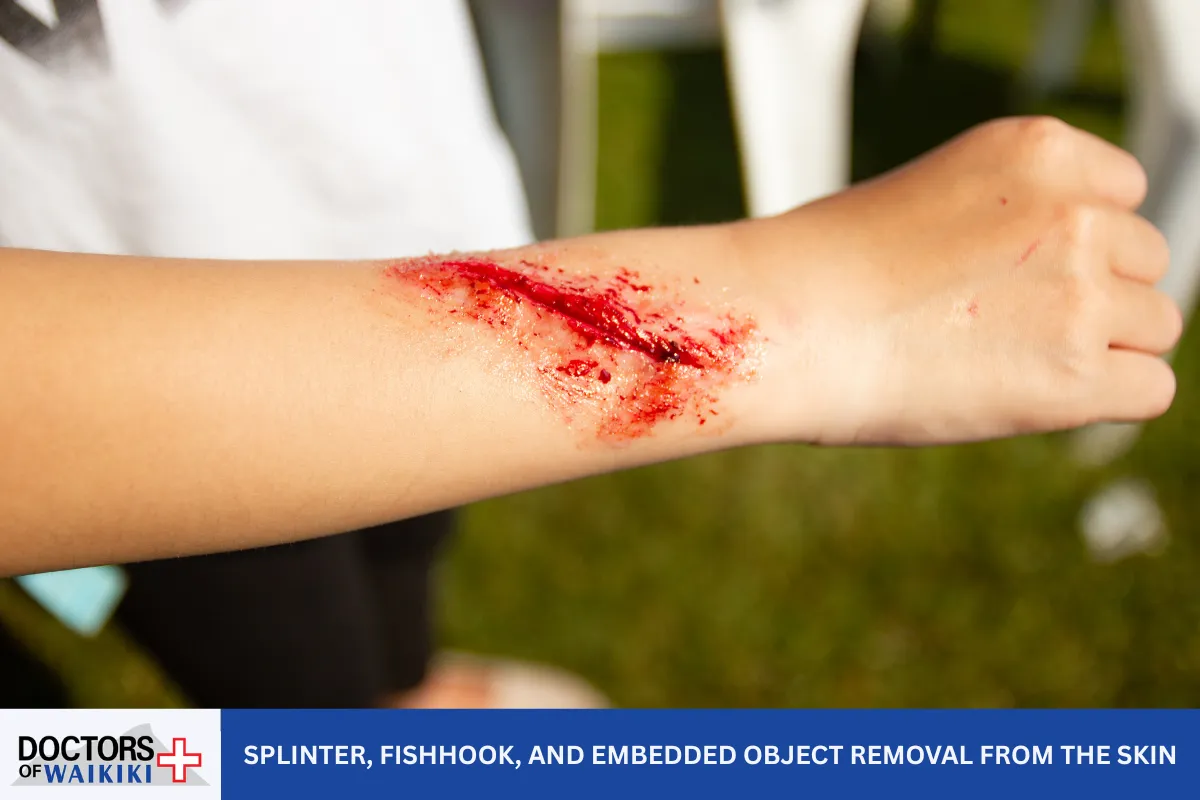
Wood splinters, shreds of glass, metal twigs, thorns, or even fishhooks can get stuck in the skin or under the nail. Urgent care services are well-suited for safe removal and healing.
1. Cleaning and Numbing
Providers begin by cleaning the site to reduce infection risk. Local anesthetic (lidocaine) may be injected for pain control.
2. Removal
Sterile tweezers, forceps, or a needle are used to carefully pull out the foreign object. Sometimes a tiny incision is needed if the object is deeply embedded. The entire process is quick and less painful with numbing.
3. Debridement and Dressing
All debris is cleaned from the wound (debridement). The wound is covered and bandaged with sterile dressing.
4. Antibiotics and Tetanus
Depending on the injury, the provider may prescribe oral antibiotics, especially for dirty or deep wounds, and recommend a tetanus booster or Hepatitis B vaccine.
5. Wounds Closure
If you have a moderate laceration, stitches (laceration repair) may be needed. After wound care, you’ll receive aftercare instructions, including how to watch for infection, pain, or swelling.
Read Honolulu Urgent Care Centers: Do Urgent Care Clinics Offer Stitches and Wound Care?
When Should You Go to the ER Instead?
Not all eye and skin injuries are suitable for urgent care. Sometimes emergency room services are necessary for:
- Severe bleeding that won’t stop
- Eye injuries with loss of vision, penetrating injuries, or chemical exposure
- Large or deeply embedded objects that require surgery
- Suspected intraocular (inside the eyeball) foreign body or severe head injury
- Signs of serious infection (such as spreading cellulitis or deep abscesses)
- High-velocity metal or glass injuries, especially to the eye
- Unconsciousness, confusion, or major trauma
For these, emergency medical care at the hospital emergency department is safest, as more advanced surgery or imaging (CT, advanced diagnostic technology) may be needed.
What Kind of Providers and Staff Will Treat You?
Urgent care clinics are staffed by a multidisciplinary medical team, including:
- Board-certified doctors/physicians
- Nurse practitioners (NPs) and advanced practice providers
- Trained support staff
- Eye doctors (ophthalmologists, optometrists) available via referral
Most Honolulu urgent care centers use advanced laboratories, on-site imaging, and electronic medical record systems to keep track of your care and coordinate with any needed specialists.
What Is the Process Like at an Urgent Care Clinic?
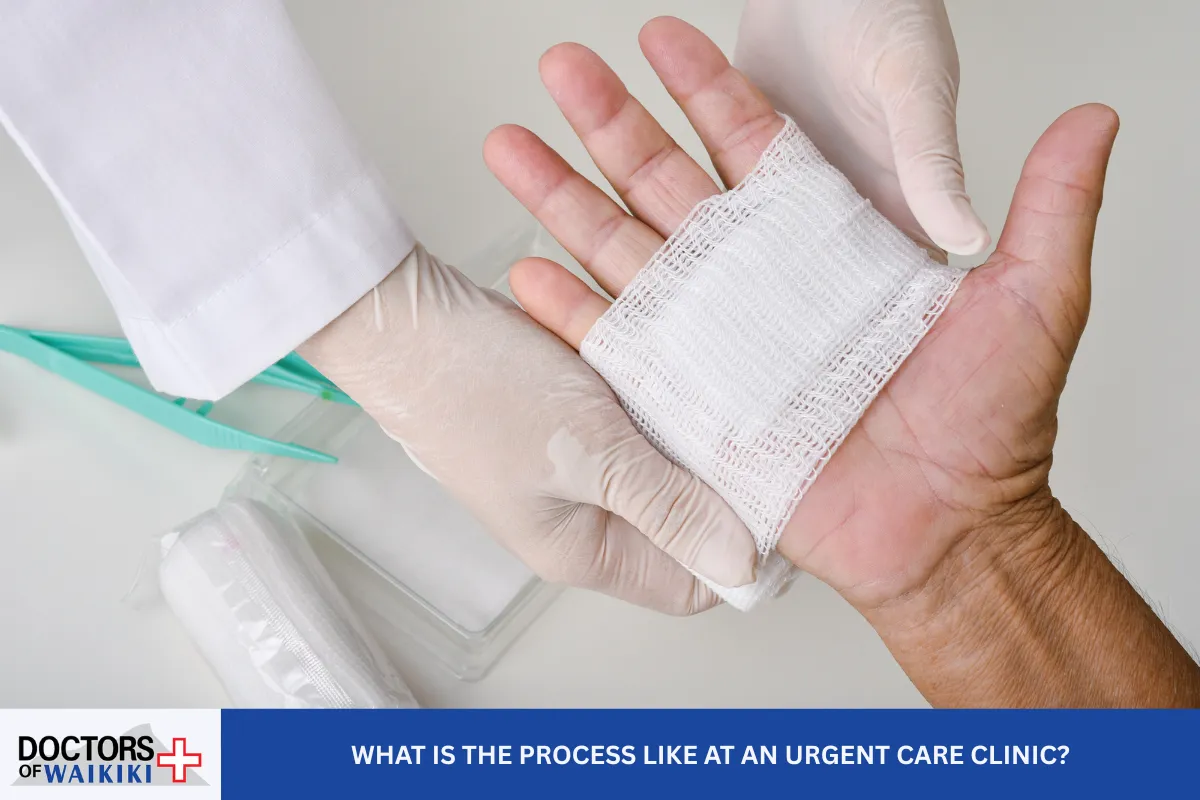
- Walk-in or register online: Most urgent care clinics offer walk-in visits for immediate care. If volumes are high, the wait time may be a little longer, but it is still much less than most emergency rooms.
- Check-in: Present your insurance card or discuss your health insurance coverage. The front desk staff will register your visit.
- Medical evaluation: After being triaged, a health professional will take your history and symptoms, then examine the area.
- Diagnostic imaging/testing: If needed, you may be sent for on-site X-ray, special testing, or a blood test.
- Treatment and removal: Removal procedures are done in-office, with numbing as needed.
- Aftercare: You get detailed care instructions, wound protection, any prescriptions (antibiotics, ointment, pain medicine), and a plan for follow-up.
- Paperwork: Everything is logged in the medical record, and referrals are made if follow-up care is needed.
Prevention, Recovery, and Home Care Tips
To reduce your risk of foreign body incidents:
- Wear protective eyewear during work or play activities.
- Keep play and work areas free of sharp objects.
- Use caution with power tools or when cleaning up glass, metal, or wood.
At home, try not to rub your eye or dig at a splinter. Applying gentle flushing (with saline or water) might help minor debris, but if pain continues, get urgent care right away.
What If I Need Travel Medicine or Special Services?
Honolulu urgent care centers and medical clinics also provide travel insurance advice, travel medicine, immunizations, COVID-19 testing, flu shots, work and school clearance, sports physicals, women’s health services, and men’s health. If you’re traveling, ask about travel insurance and primary care services for peace of mind.
Why Choose Urgent Care for Foreign Body Removal?
Urgent care centers provide a convenient, affordable, and quick option for non-life-threatening foreign body removal from the skin or eyes. They bridge the gap between primary care (where same-day appointments may not be available) and the busy, costly emergency room. Board-certified physicians, advanced diagnostic testing, and supportive front desk teams mean you can get the care you need, right away, with walk-in availability—even if you’re visiting Honolulu.
Honolulu Urgent Care Centers – Doctors of Waikiki
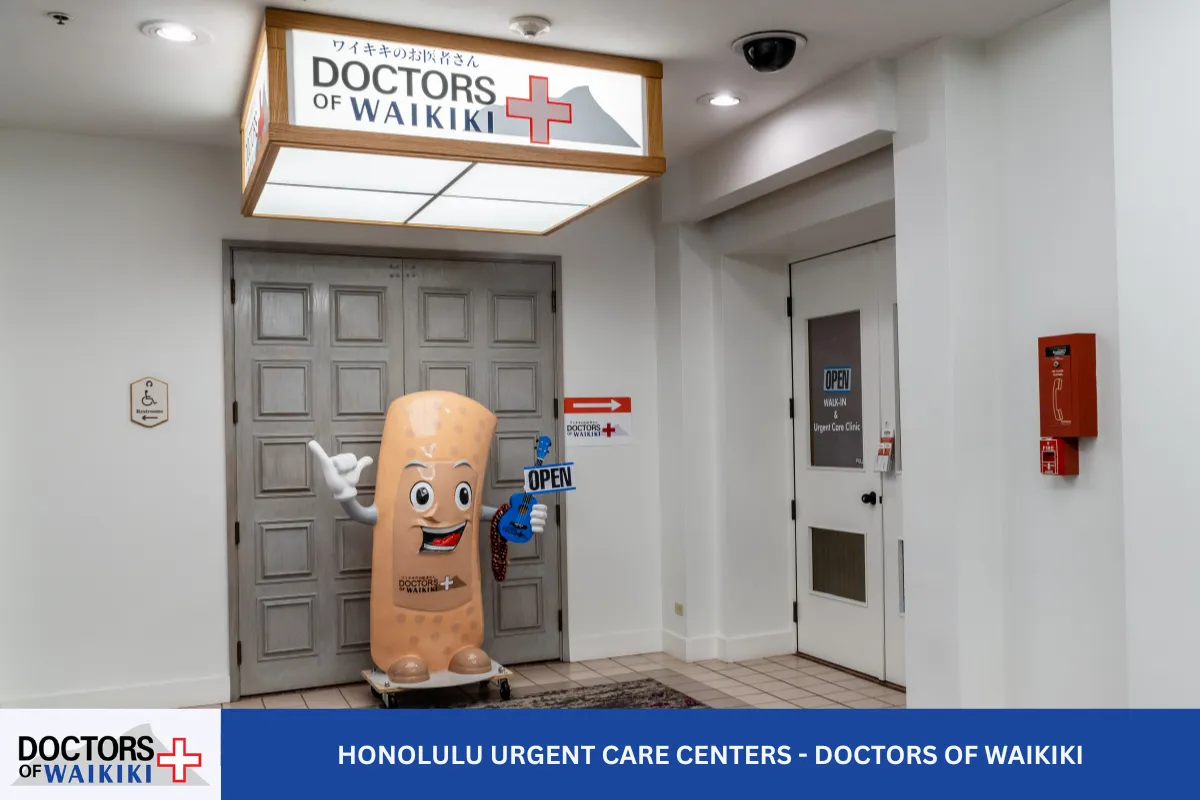
When sudden injuries strike—like a splinter in your finger or debris in your eye—trust Doctors of Waikiki, one of the top Honolulu urgent care centers, to provide fast, expert help. Our board-certified team specializes in safe, precise removal of foreign objects from the skin and eyes, so you can avoid long ER waits and get back to enjoying paradise. With walk-in convenience, advanced diagnostic tools, and compassionate care for both adults and children, we’re your go-to clinic for urgent needs. Whether you live in Honolulu or are just visiting, we make quality medical care easy and accessible. Call us today at (808) 922-2112 to schedule a consultation and experience quick relief! We proudly serve Honolulu, Hawaii.
Frequently Asked Questions
1. Can urgent care remove all types of foreign objects from the skin and eye?
Urgent care clinics can safely remove many types of foreign objects from the skin and superficial layers of the eye, including metal, wood, glass, splinters, and even some embedded objects. However, certain cases—such as objects lodged deeply in tissue, chemical eye injuries, or foreign bodies that have penetrated the eye—are best managed in a hospital emergency room or by an ophthalmologist. If imaging suggests a deeply embedded or risky object, urgent care will refer you for advanced care or specialist evaluation.
2. How does urgent care help with infections after a foreign body is removed?
After foreign body removal, providers often clean the area thoroughly and may prescribe antibiotics—eye drops for ocular injuries (such as erythromycin or fluoroquinolone ointment) or oral antibiotics for deeper skin wounds. They check for signs of infection such as redness, swelling, pain, or pus, and sometimes recommend a tetanus booster. Providers also advise you on wound protection and what symptoms should prompt a return visit.
3. Do I need insurance to get foreign object removal at urgent care?
Most urgent care clinics accept various health insurance plans, but walk-in care is available to self-pay patients as well. You’ll need to present your insurance card at the front desk. Check with your insurance system or health plan to see which locations are in-network. Some services, like special imaging or advanced procedures, may incur additional costs depending on your coverage.
4. What should I do if my symptoms get worse after foreign object removal?
If you develop increased pain, redness, swelling, fever, vision changes, discharge, or if the wound seems to worsen after leaving urgent care, return to the clinic or go to the emergency room immediately. These could be signs of infection or other complications. Urgent care staff will provide you with clear return precautions and emergency care instructions at your initial visit.
5. Can children be treated at urgent care centers for foreign bodies?
Yes, pediatric urgent care is available at most clinics, and the providers are experienced in treating children. Kids often present with foreign bodies in the skin (splinters, thorns) or accidental eye injuries. The medical team uses child-friendly techniques, numbing agents, and distraction to minimize discomfort. If the injury is serious enough, urgent care might refer your child to a pediatric emergency department for specialized care.

